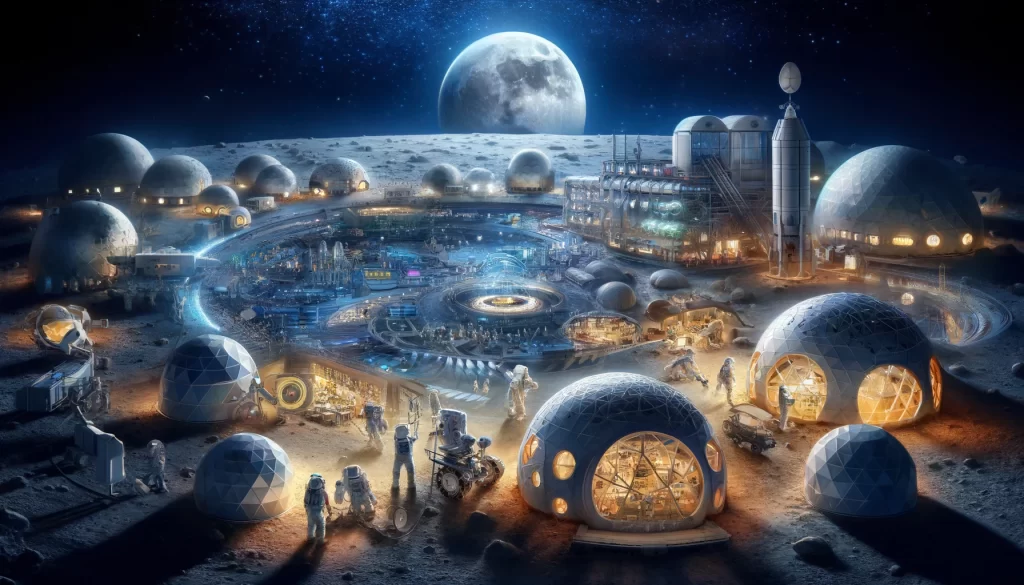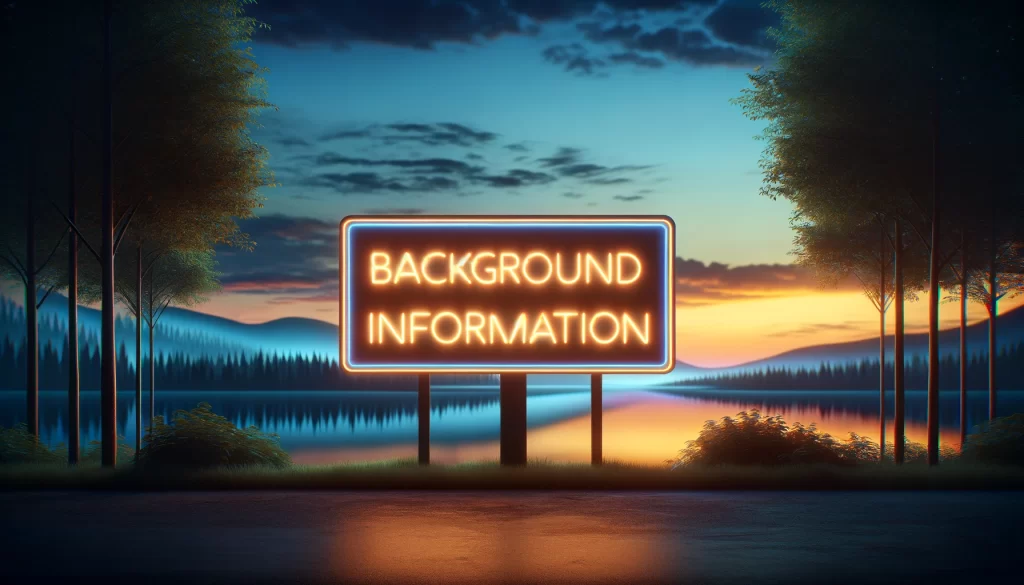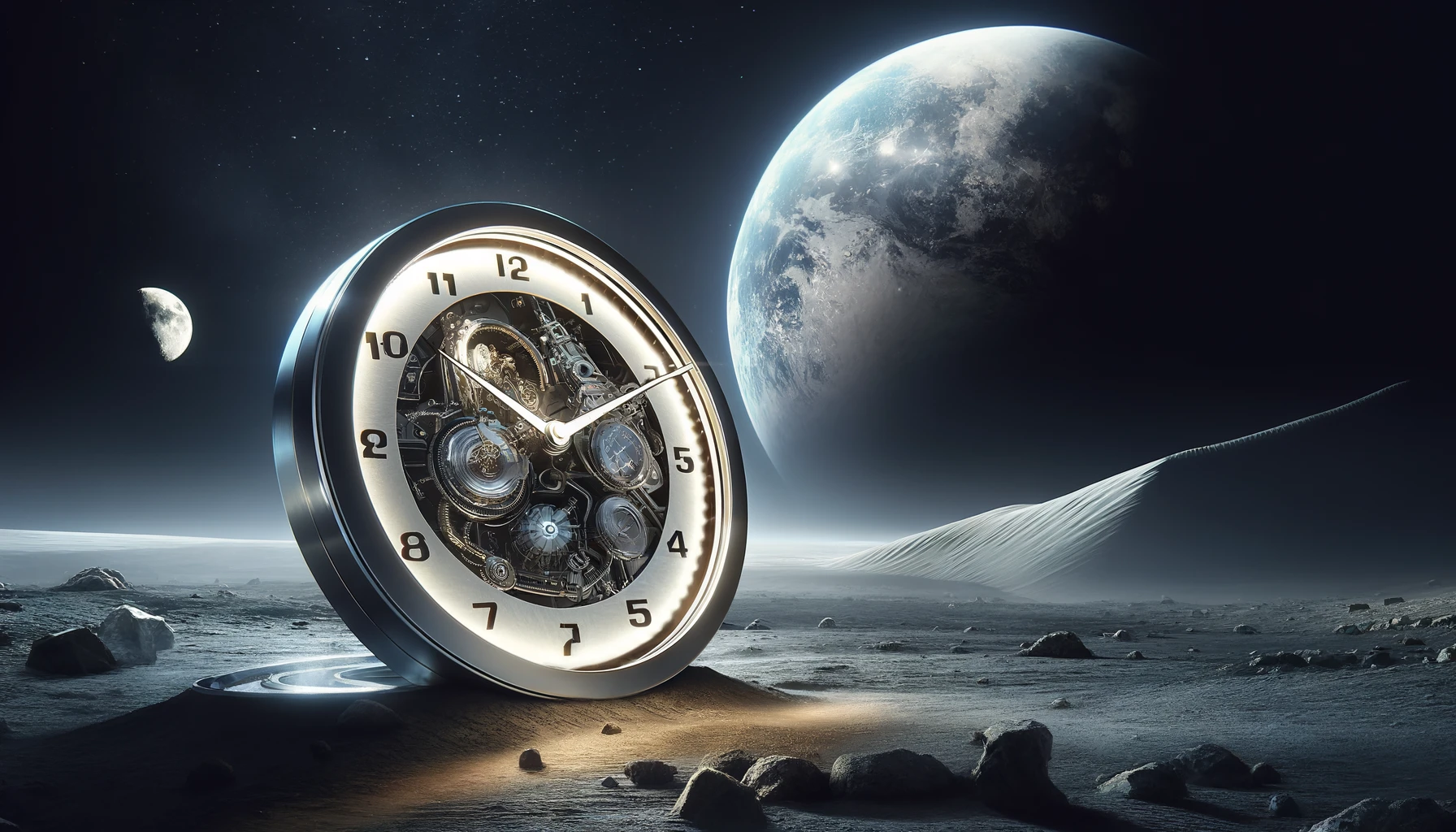Imagine a world where astronauts, robots, and future colonies on the moon all operate on a unique time zone, different from any on Earth. This is not a scene from a science fiction novel but a real proposal from the Biden Administration, aiming to pioneer a new era in space exploration.
As we stand on the brink of a new space race, the Administration is urging NASA to develop a moon-specific time standard. Why? Because time actually moves slightly faster on the moon than it does here on Earth. Although the difference is minuscule, it’s significant enough to cause potential issues in the precise world of space flight, especially as lunar spacecraft and satellites currently rely on Earth-based time standards.
According to a recent memo from the White House Office of Science and Technology Policy, the tiny discrepancy between lunar and Earth time could lead to complications for space missions. In response, the concept of Coordinated Lunar Time (LTC) was introduced. Michelle Hanlon, the executive director of the Center for Air and Space Law at the University of Mississippi, highlights the importance of LTC, especially considering the global nature of future moon missions. With 36 nations currently partnered in the Artemis program, a unified lunar time system would facilitate better coordination among international teams scattered across different time zones on Earth.

Unlike Earth’s time zones, which are based on Coordinated Universal Time (UTC) and determined by the precise measurements of hundreds of atomic clocks globally, lunar time would account for the moon’s lower gravity and its relative motion to Earth. This causes lunar time to advance by 56 microseconds faster each day than on Earth. To address this, the proposal suggests using an “ensemble of clocks” stationed on the moon to establish LTC.
However, creating a lunar time zone isn’t as simple as setting a few clocks—it requires international cooperation and agreement. Hanlon emphasizes the significance of this move towards a unified approach in lunar exploration. In a world where geopolitical tensions often dominate headlines, establishing a collaborative framework for space travel offers a glimmer of hope. As the moon’s south pole becomes a hotbed for international space missions, agreeing on a common lunar time standard becomes increasingly crucial. This initiative not only aims to ensure the peaceful exploration and use of space but also to foster a spirit of global unity in the final frontier.
This article is based on the following article:

Background Information
Understanding these concepts helps frame the significance of the proposal for a lunar time standard. It’s not just about keeping time; it’s about fostering international collaboration, ensuring the success of complex space missions, and laying the groundwork for the future of human presence on the moon. This initiative represents a step forward in addressing the practical challenges of deep space exploration, emphasizing cooperation and shared understanding among the nations of Earth as we reach out to the stars.
Timekeeping on Earth
Timekeeping on Earth is a complex, highly precise operation. The basis for our global time standard is Coordinated Universal Time (UTC), which relies on atomic clocks. These clocks are incredibly accurate, capable of keeping time to within a fraction of a second over millions of years. UTC is used to synchronize time across the world’s various time zones, ensuring that, despite geographical differences, we can all agree on what time it is.
The Concept of Time in Space
When we talk about time in space, things get a bit more complicated. Due to the theories of relativity proposed by Albert Einstein, we know that gravity and velocity affect the passage of time. The stronger the gravitational pull an object experiences, the slower time passes for it (this is known as gravitational time dilation). Similarly, as one’s velocity relative to another observer increases, time also passes more slowly for the moving observer (this is due to time dilation under special relativity).
Why Lunar Time?
The moon’s gravitational pull is weaker than Earth’s, and its relative motion to Earth affects the passage of time. Specifically, time on the moon ticks by slightly faster than time on Earth. While this difference is minute, precision is paramount in space exploration. A unified lunar time standard (Coordinated Lunar Time, or LTC) would address the challenges of coordinating activities among international spacecraft, satellites, and future lunar colonies, ensuring accuracy and synchronization among global partners.
International Lunar Exploration Efforts
The Artemis program, led by NASA with the collaboration of international partners, aims to return humans to the moon and establish a sustainable presence by the end of the decade. This ambitious project has drawn together 36 nations, each contributing to the effort to explore the lunar surface, particularly focusing on the moon’s south pole, believed to contain water ice that could support future lunar bases. The collaboration underscores the importance of a shared lunar time standard to facilitate communication and operations among the diverse international teams working towards common goals in lunar exploration.
Please subscribe to Insight Fortnight, our biweekly newsletter!
